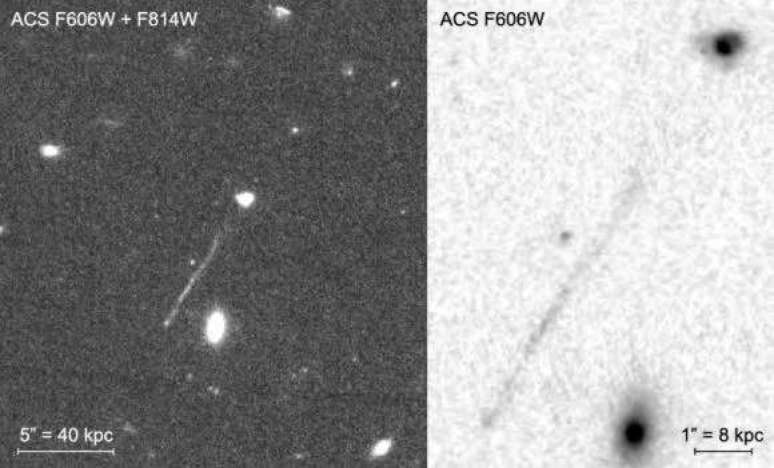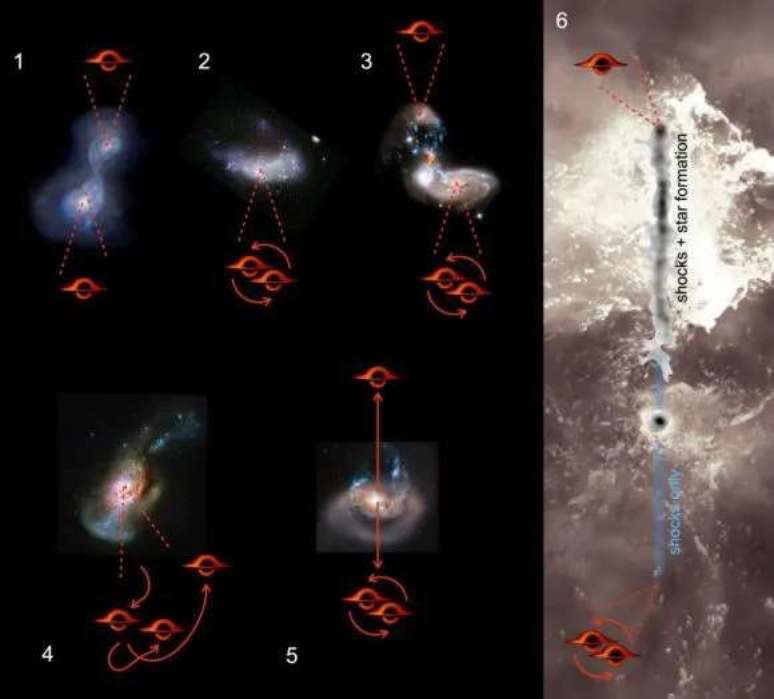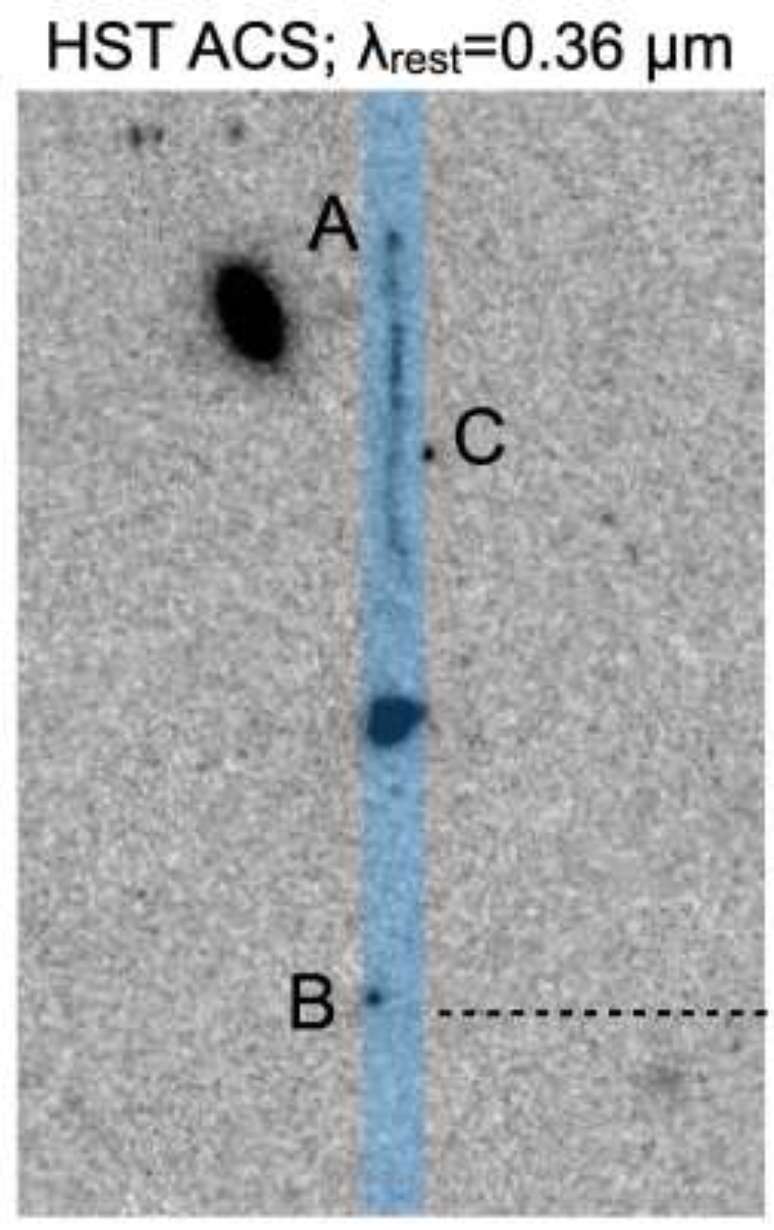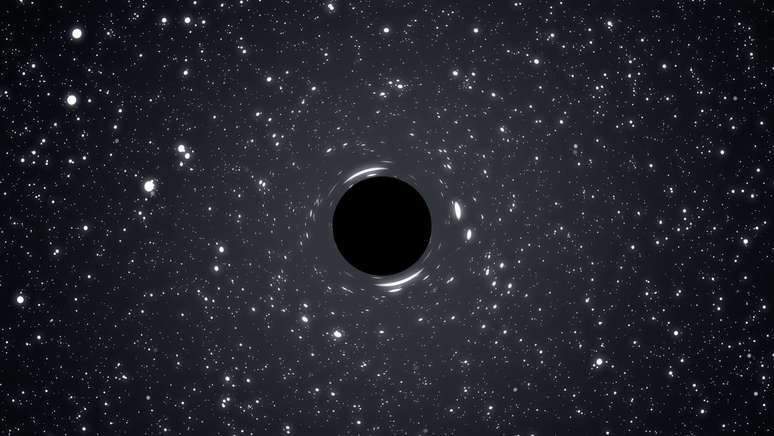The supermassive black hole of a dwarf galaxy has “escaped” the galactic core and travels forming new stars wherever it goes
Supermassive black holes (SMBHs) are usually at the center of galaxies, but this doesn’t seem to be the case for the protagonist of this news story. As revealed in a new study, a mysterious trail found in a dwarf galaxy would have been produced by a “runaway” supermassive black hole, which would already be far from the galactic nucleus.
- The neutron star rotates 78,000 times a minute as it becomes a black hole
- Gas clouds trade galaxies to fuel supermassive black holes
Hubble Space Telescope images of the dwarf galaxy RCP 28 have revealed a white line extending across the circumgalactic medium, a region around galaxies, with diffuse, barely visible gas.
This line, according to the authors of the study, could be a trail left by a very dense and fast object, which would have formed a shock wave large enough to appear in telescope images. Such a wave would affect the circumgalactic gas, forcing the emergence of new stars.

Running black hole.
There are a few types of objects that, in theory, could have done this, but the research authors’ best bet is a Black hole supermassive. They are normally at the center of their host galaxies and do not leave, but there is some reason to think that some of them could be ejected to roam freely outside the galactic disk.
One of the ways this can happen is through a merger between three galaxies. In the process, the respective SMBHs will be pushed towards the center of the merged galaxy, but their movements will not be very simple. This is because the orbit of three interacting objects is unpredictable.
In this scenario, an interaction between three bodies could give one of them a speed boost large enough to be ejected from the galaxy. It is with this possibility that the new study, not yet peer-reviewed, works.

The trail around the galaxy
When an SMBH travels through the circumgalactic medium filled with ionized hydrogen, it produces a shock front with a long trail behind it. There, gas clouds “crushed” by the shock pressure can cool and form stars.
If this happens, the new stars will appear along the way, forming “nodes”, or points where the matter is more concentrated. The researchers found three of the nodes in the line discovered by Hubble and measured their age and metallicity.
By measuring the properties of the stars, the authors found that the three ‘nodes’ fit within the age established by the theory of the formation of new trace stars like this one. They are also within the theoretical range for metallicity and dust content.

Ultimately, if the black hole was indeed ejected from the galactic center, there should be signs of “warping” throughout the galaxy, caused by the extremely strong gravitational pull of the SMBH. Well, the team looked at the galaxy RCP 28 and found exactly this feature.
Unfortunately, Hubble doesn’t have enough resolution to search for the black hole and confirm the new paper’s proposal. But the James Webb and the grace Roman telescope it can solve the problem and reveal emission lines associated with the black hole, allowing its position to be determined.
The work was published in arXiv.org and still awaiting peer review.
Source: arXiv.org; through: Universe Today
Trending on Canaltech:
- OpenAI CEO says ChatGPT is great, but it’s a horrible product
- whatsapp | 4 big news coming to the messenger today
- How anxiety affects different parts of your body
- BYD withdraws from the purchase of the former Ford plant in Brazil
- What characterizes a TV box as illegal?
- Medicinal mushroom activates neuron growth and improves memory
Source: Terra
Rose James is a Gossipify movie and series reviewer known for her in-depth analysis and unique perspective on the latest releases. With a background in film studies, she provides engaging and informative reviews, and keeps readers up to date with industry trends and emerging talents.






